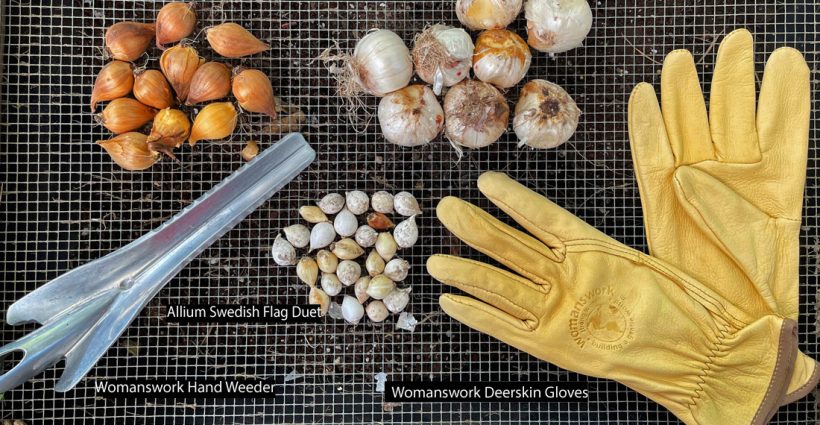designed for the way women work.

What to do in the garden before and after the first frost
Category: How-To Projects, Plant Ideas & Info, Presenting "The Curious Gardener"
Not all frosts are equal. You can find out more about expected frost and freeze dates at your local cooperative extension website or by searching ‘frost dates‘ along with your town and state or zip code. You can match that information with the 10-day forecast on your phone’s weather app.
A light frost occurs when temperatures fall to between 29 and 32 degrees F. Some tender plants will die.
A moderate freeze occurs when temperatures go from 25 to 28 degrees F.
Temperatures that fall below 24 degrees F produce a ‘killing frost.’
When you look at average temperatures keep in mind that your garden may be in a micro-climate. If you live at the bottom of a hill or in a hollow, as I do, you may experience a frost before the higher elevations in your area. This is because cold air sinks, and is denser than warm air, which rises.
After you get your first frost it can be 8-12 weeks before the ground freezes and can’t be worked. You need 5 or more days (and nights) of subfreezing temperatures before the ground will freeze solid. Where I live in Zone 6 that doesn’t happen until December or January.
Here are 9 things to do in your garden before and after the first frost:
- Pick herbs that can’t withstand any frost, such as basil. Other herbs can be brought indoors a little later, either to dry or freeze or repot for indoor living. I’m going to repot my sage, parsley and rosemary plants and grow them indoors under grow lights.
- Drain your hoses and rain barrel. Consider putting foam faucet covers on your outdoor faucets. Remember water expands when it freezes, so any water left in an outdoor drain or hose may cause damage that you will need to deal with next spring.
- Leave your dahlia tubers in the ground for a week or two after you’ve had a frost or two. This helps initiate dormancy and improves your chances of success when you bring them indoors for winter storage (if you live in colder climates, Zones 3-7).
- Pull annuals out of the garden and put them on your compost pile. For perennials, decide which ones you want to cut back and which ones you want to leave for winter interest and for wildlife sustainability. See our story from last fall with horticulturist Ruth Clausen’s suggestions.
- Water perennials so they don’t suffer from winter desiccation. Remember when the ground is frozen water runs off or sits, but it doesn’t penetrate the soil. Your plants have a better chance of surviving the cold if they are hydrated.
- Determine your strategy for container plants that are outdoors. If you’re bringing them indoors for the winter check for insects or other disease to avoid endangering your houseplants. If you want to leave the containers outdoors and let the plants die, empty them first so the expanded soil doesn’t crack the pot. See more on this topic in an earlier article I wrote.
- Wait until temperatures are consistently cold before you put a protective layer of mulch or pine branches over your garden beds. If you do it too early mice will make their winter home there and eat your plants too.
- Turn your compost pile to aerate it and speed up decomposition. If you don’t turn it it can take 6-12 months longer to become soil.
- Finally, plant spring blooming bulbs. You can do this anytime before the ground is too hard to work. I ordered more allium, more daffodils and some iris. They’re just waiting for me to decide where to plant them!
After these chores are completed, relax and start dreaming about next spring.



Why do you pull your sage. I have a huge 40 year old clump which I can pick leaves from until say March.
Love it in my winter garden along with rue.